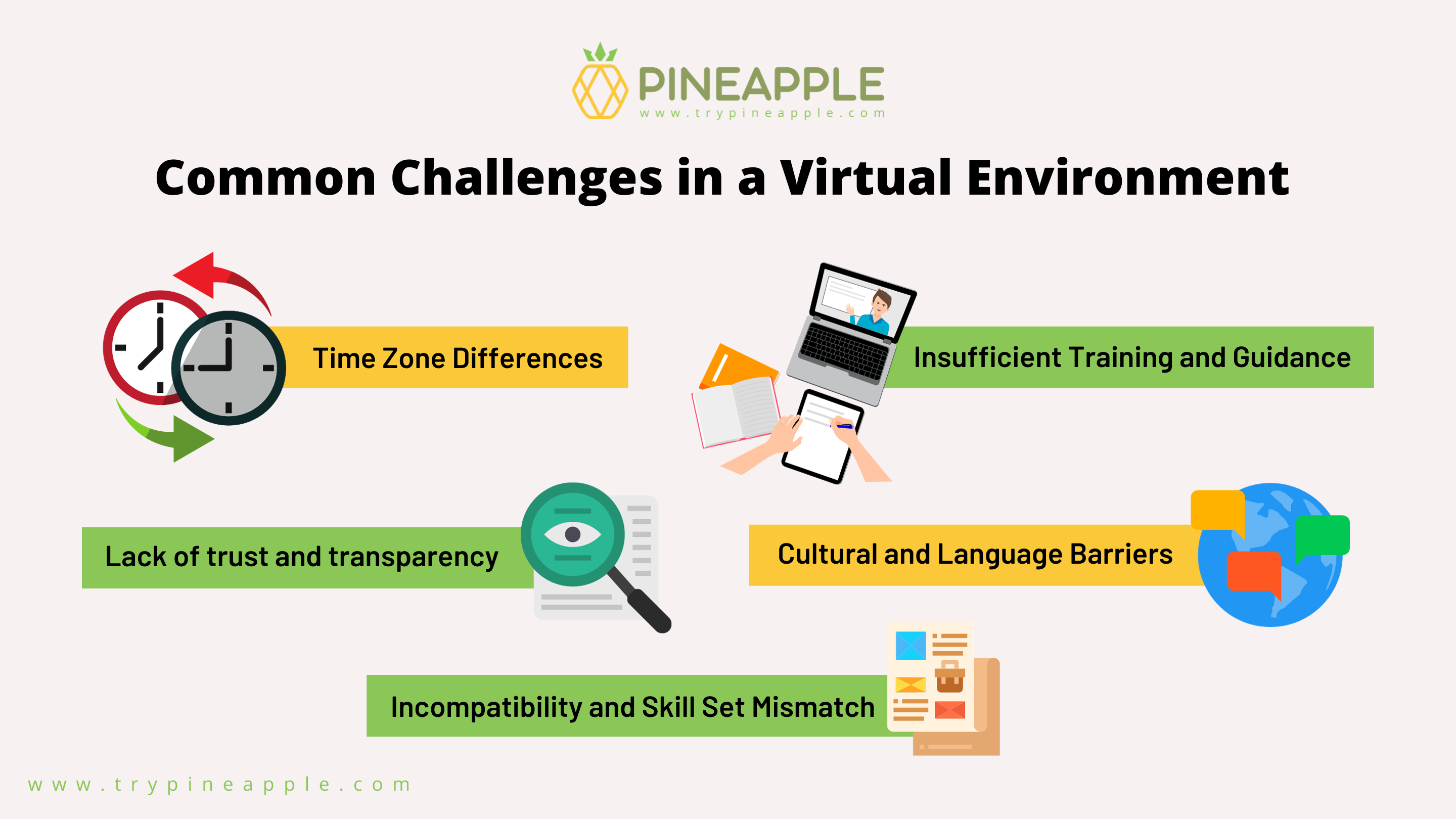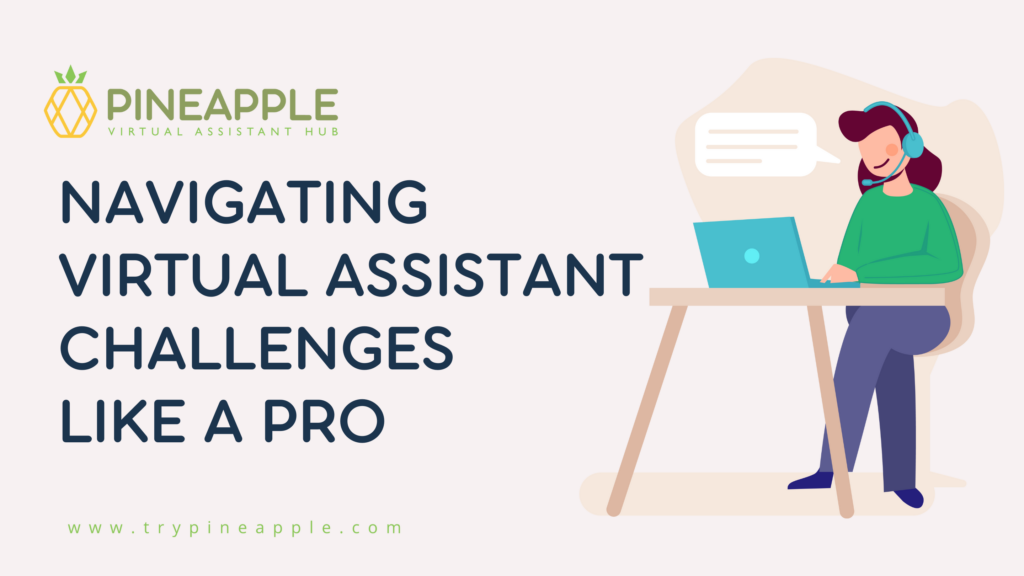Navigating Virtual Assistant Challenges Like a Pro
In the modern business landscape, hiring virtual assistants has become a popular solution for tasks ranging from basic administrative work to more skilled tasks such as digital marketing. While the benefits of working with virtual assistants are undeniable, it's important to recognize that there are challenges that can arise in this setup. Let's delve into these common challenges and discover effective strategies to navigate them.
Time Zone Differences
Time differences can affect your working relationship with your virtual assistant, causing scheduling conflicts, delayed responses, and communication hurdles. When working hours don't overlap, scheduling meetings and real-time communication become challenging, leading to delays in decision-making and project completion.
To mitigate this challenge, it is important to establish effective communication channels. Leverage project management tools with notifications to alert your virtual assistant to urgent deadlines, schedule meeting times at least weekly or biweekly, and utilize a shared calendar for better collaboration. These can help maintain morale and a sense of belongingness in the team despite time zone differences, ultimately leading to a more productive and harmonious working relationship.
Helpful links: Effective Collaboration Across Time Zones?
Insufficient Training and Guidance
While Virtual Assistants at Pineapple receive initial training and can bring their own expertise to the table, it is essential to provide them with tailored guidance to comprehensively grasp your unique business processes and meet your expectations. Without this specialized training and support, they may encounter difficulties in executing tasks effectively, ultimately impacting productivity.
By allocating time and resources to train your virtual assistant, you empower them to operate with greater efficiency, aligning their work closely with your distinct business requirements. This investment not only boosts their confidence and sense of ownership in their role but also results in heightened productivity and the cultivation of a stronger working relationship.
Lack of trust and transparency
Building trust is paramount in any working relationship, even more so with remote teams. When trust and transparency are lacking, it can lead to negative consequences such as decreased collaboration, increased conflict, low morale, and higher employee turnover rates.
Remember that building trust with your virtual assistant, like any relationship, takes time and is earned through consistent actions. As a business owner, it is essential to provide clear expectations, open and honest communication, and a supportive environment. When virtual assistants feel trusted and valued, they are more likely to take ownership of their work and strive for excellence.

Cultural and Language Barriers
Cultural and language barriers are one of the most common challenges when managing virtual team members from different backgrounds. Despite English being the medium of instruction in the Philippines, certain language nuances may have a significant impact on the way your virtual assistant interprets instructions and handles conflicts.
Understanding the importance of proactive communication, cultural awareness, and the willingness to adapt can mitigate these challenges and build a more effective and harmonious virtual team. By creating an environment of mutual respect and understanding, you can leverage the diverse strengths of your team members to achieve your business goals.
Helpful links: How to Break Language Barrier in a Virtual Environment
Incompatibility and Skill Set Mismatch
At a certain point, you may come to realize that your virtual assistant's work style and skill set don't quite align with your needs and expectations. Hiring a virtual assistant without essential skills can lead to unsatisfactory outcomes, and mismatched working styles can hinder collaboration.
During the hiring process, it's crucial to conduct a comprehensive assessment of the virtual assistant's skills and experience. You can gauge their proficiency by reviewing their portfolios, conducting interviews, and even considering test projects. If you detect a skill gap, address it promptly and explore potential solutions such as additional training or task reassignment. Additionally, it's essential to establish open and candid discussions about working styles and preferences right from the outset.
Share your expectations, preferred methods of communication, and how you organize tasks and deadlines. Likewise, encourage the virtual assistant to express their own working preferences and any concerns they might have. Finding common ground and identifying strategies to accommodate each other's working styles can significantly enhance collaboration.
At Pineapple, our VAs are put through a strict screening and application process. The great thing about working with Pineapple is you’ll have a dedicated Client Account Manager who is here to facilitate this remote work setup. Partnering with Pineapple does not only save you time and money but also ensures that you are making the best hiring decisions for your business.
For more tips and updates follow us on Facebook and Instagram.




